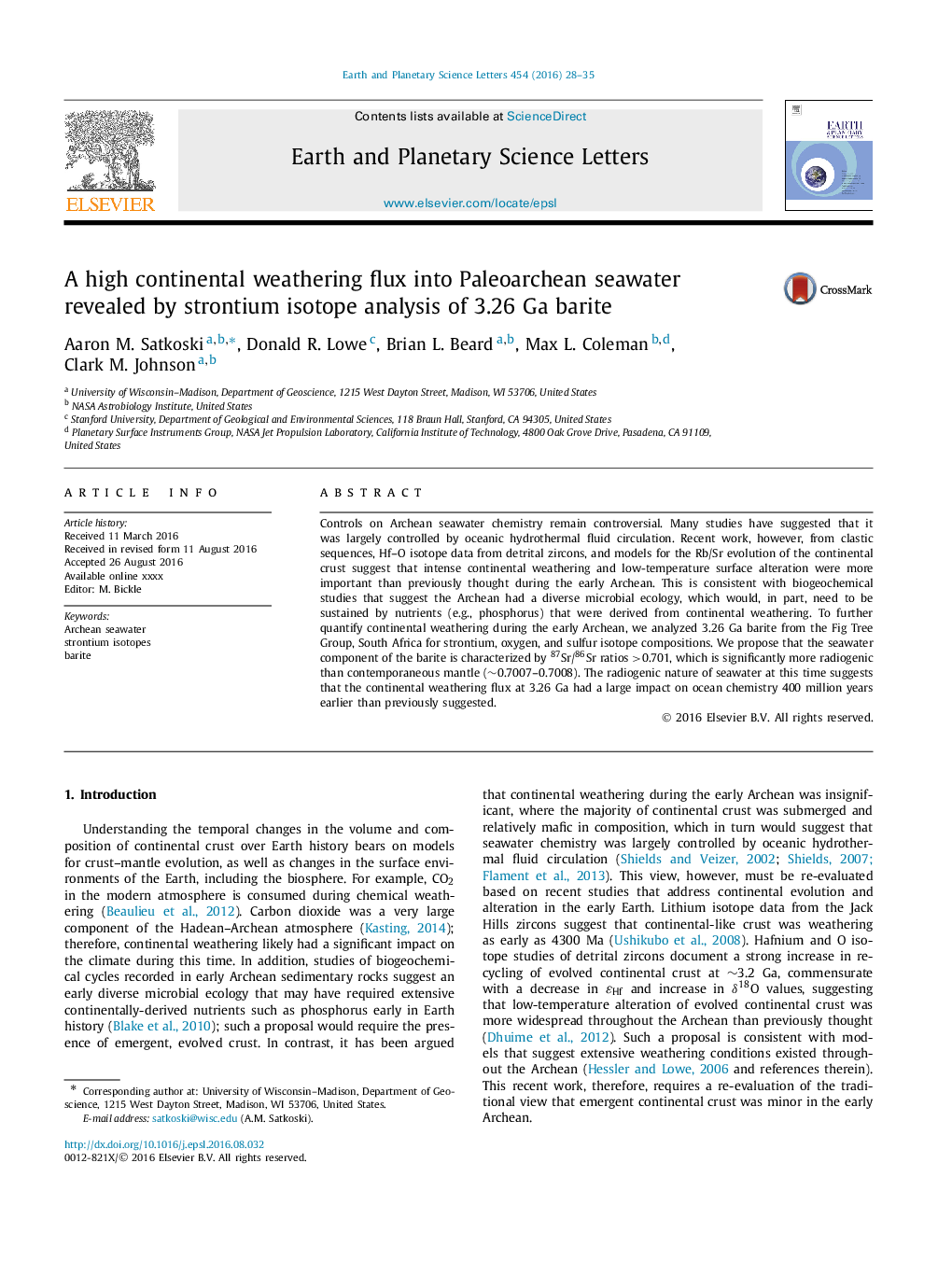| Article ID | Journal | Published Year | Pages | File Type |
|---|---|---|---|---|
| 6427179 | Earth and Planetary Science Letters | 2016 | 8 Pages |
Abstract
Controls on Archean seawater chemistry remain controversial. Many studies have suggested that it was largely controlled by oceanic hydrothermal fluid circulation. Recent work, however, from clastic sequences, Hf-O isotope data from detrital zircons, and models for the Rb/Sr evolution of the continental crust suggest that intense continental weathering and low-temperature surface alteration were more important than previously thought during the early Archean. This is consistent with biogeochemical studies that suggest the Archean had a diverse microbial ecology, which would, in part, need to be sustained by nutrients (e.g., phosphorus) that were derived from continental weathering. To further quantify continental weathering during the early Archean, we analyzed 3.26 Ga barite from the Fig Tree Group, South Africa for strontium, oxygen, and sulfur isotope compositions. We propose that the seawater component of the barite is characterized by 87Sr/86Sr ratios >0.701, which is significantly more radiogenic than contemporaneous mantle (â¼0.7007-0.7008). The radiogenic nature of seawater at this time suggests that the continental weathering flux at 3.26 Ga had a large impact on ocean chemistry 400 million years earlier than previously suggested.
Keywords
Related Topics
Physical Sciences and Engineering
Earth and Planetary Sciences
Earth and Planetary Sciences (General)
Authors
Aaron M. Satkoski, Donald R. Lowe, Brian L. Beard, Max L. Coleman, Clark M. Johnson,
